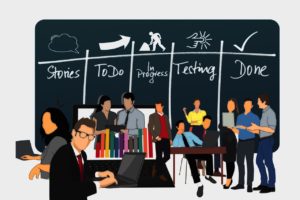Becoming a teacher is one of the most important decisions that someone can make in their life. It’s a noble profession that helps shape the minds of future generations, and those who are aspiring to become teachers in the UK need to be aware of the different factors that can affect learning.
Let’s explore some of the most important ones.

The Students’ Age
Different age groups have different learning needs and abilities. For example, younger students may be more easily distracted and need more hands-on activities to keep them engaged, while older students may be able to sit still for long periods and grasp complex concepts more easily. As a teacher, it’s important to be aware of the age group you’ll be teaching and tailor your lessons accordingly.
Therefore, lessons for younger students should be shorter with more breaks, while older students can handle longer periods of instruction. This means that you’ll need to prepare different types of activities for each age group. Younger ones will need play-based activities, while older ones will be able to handle more abstract concepts.
The Comfort and Environment of the Classroom
The physical environment of the classroom can also have an impact on learning. If the room is too hot, too cold, or too bright, it can be difficult for students to concentrate. Make sure that the temperature is comfortable and that there aren’t any glaring light sources that could cause headaches or eye strain.
It’s also important to have a chalkboard or whiteboard, as well as other materials such as books, posters, and maps.
In addition, chairs and desks should be arranged in a way that’s conducive to learning. Students should be able to see the board and each other, and they should have enough space to move around and feel comfortable. But their comfort and functionality are important as well, so when looking for classroom furniture suppliers, make sure to find ones that offer a variety of options, for different ages, abilities, and types of classrooms. Practicality and material safety should also be considered.
The Students’ Culture and Background
The student’s cultural and linguistic backgrounds can also affect learning. If English is not the first language of your students, they may need extra help in understanding the material. It’s important to be patient and explain things clearly, using simple language when necessary.
In addition, you should be aware of any cultural customs and traditions that could affect the way your students learn. For example, in some cultures, it’s considered rude to ask questions or challenge authority figures, so students may be reluctant to do so in the classroom. As a teacher, you need to create an environment where all students feel comfortable asking questions and participating in class.
The Teachers’ Personality
It’s been said that the best teachers are the ones who can connect with their students on a personal level. Students learn best when they feel comfortable with their teachers and when they trust them. As a result, teachers need to be friendly and approachable. But being too friendly can also be a problem, as students may see you as a friend rather than an authority figure.
It’s important to strike a balance and create a rapport with your students that’s based on mutual respect. When you have a good relationship with your students, they’re more likely to listen to you and be motivated to learn.
Try to get to know your students and their interests, and use that information to make your lessons more engaging. For example, if you have a student who’s interested in music, you could use songs to teach vocabulary or grammar concepts.
The Teaching Methods Used
Different teaching methods work better for different students. Some may be visual learners and do better with seeing pictures and diagrams, while others may be auditory learners and need to hear the material to understand it. And some students may be kinesthetic learners, meaning they learn best by doing.
As a teacher, it’s important to use a variety of teaching methods to cater to all types of learners. This way, everyone in the class will be able to understand and retain the material.
Some common teaching methods include lectures, discussions, demonstrations, and hands-on activities. Make sure to mix things up and use a variety of methods for each lesson.
The Length and Structure of the Lesson
The length of the lesson can also affect learning. If a lesson is too long, students may lose focus and become bored. On the other hand, if it’s too short, they may not have enough time to fully understand the material.
It’s important to find a balance and structure your lessons in a way that’s conducive to learning. For example, you might want to start with a review of the previous lesson, followed by a lecture or demonstration. Then, you could do a hands-on activity or group work, and end with a summary of the main points.
The Amount of Homework Given
Homework is a necessary part of learning, but it’s important not to give too much. If students are overwhelmed with homework, they may start to dislike school and lose motivation.
It’s important to find a balance and give students enough homework to reinforce what they’ve learned in class, but not so much that it becomes a burden. A good rule of thumb is to give no more than 10 minutes of homework per night for elementary school students, and no more than 30 minutes for middle and high school students.
The Class Size
In general, smaller classes are better, as there’s more opportunity for one-on-one interaction between the teacher and students. This way, students can get the individual attention they need to understand the material. In addition, smaller class sizes allow for more hands-on activities and group work. And since there are fewer students, it’s easier to keep everyone on task and focused.
However, if you have a large class, don’t despair. There are still things you can do to ensure that everyone learns. For example, you can use more group work and pair students up to help each other. You can also circulate the room more often to answer questions and provide assistance.

Several different factors can affect learning, and as a teacher, it’s important to be aware of them. This guide has explored eight of the most important ones.
When you’re aware of these factors, you can adapt your teaching methods to ensure that all students in your class learn and understand the material.















































